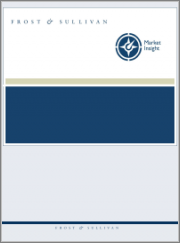
|
시장보고서
상품코드
1375369
세계의 주요 E-Bike(전동 자전거) OEM 프로파일 및 성장 기회Leading Global Electric Bike OEM Profiles and Growth Opportunities |
||||||
환경 의식, 정부 보조금, 혁신적인 커넥티드 기능이 통근객 및 레저객 수요를 견인
전기 자전거(E-Bike) 수요는 보다 지속 가능한 교통 수단, 커넥티드 서비스 및 편의성을 요구하는 소비자 욕구의 결과로 증가하고 있습니다. 물류 제공업체는 또한 라스트 원 마일의 배송에서 기존의 배송 밴 및 트럭을 대체할 수 있는 효율적인 선택지로 E-Bike를 고려하고 있습니다. 인구 밀도가 높은 도시 환경을 이동하고 이산화탄소 배출량을 최소화하며 배달 시간을 단축하는 E-Bike의 능력은 업계에서 E-Bike의 급속한 확대에 중요한 요소가 되었습니다. E-Bike는 소프트웨어로 정의되는 플랫폼으로 커넥티드 서비스의 새로운 기회를 창출합니다. 대형 전기 자전거와 마찬가지로 E-Bike는 원격 진단 및 24시간 365일 서비스를 지원하는 혁신적인 임베디드 텔레매틱스 솔루션을 특징으로 합니다. 설치 면적과 사용 패턴이 작기 때문에 데이터 수집기는 데이터 수집 플랫폼으로서 E-Bike를 대상으로 합니다. 보고서는 E-Bike 및 E-Cargo Bike 부문에 중점을 둡니다. E-Bike는 차량의 L1e-A 카테고리로 분류됩니다. 최고 속도가 시속 25km, 모터 출력이 250W-750W의 페달식 전동 자전거(페데렉)로 분류됩니다. E-Cargo Bike는 차량의 L1e-A 카테고리로 분류됩니다. 소포, 반려동물, 사람 등의 화물을 운반하도록 설계되었습니다. E-Cargo Bike는 최고 시속 25km, 적재량 200kg, 출력 250W-1kW의 페데렉으로 분류됩니다.
조사에서는 아시아, 북미, 유럽의 OEM 및 모터 제조업체를 포함한 주요 E-Bike 업계의 진출기업을 소개합니다. 각 기업 프로파일은 주요 비즈니스 모델, 시장 진출 전략, 주요 성과 하이라이트를 개설합니다. 또한 E-Bike 시장 상황에 영향을 미치는 주목 할만한 업계 제휴와 발전에 대해서도 고찰하고 있습니다. 또한 E-Bike OEM의 향후 성장 촉진요인, 과제 및 실행 가능한 기회에 대해서도 논의하고 있습니다.
목차
전략적 과제
- 왜 성장이 어려워지고 있는가?
- The Strategic Imperative 8(TM)
- E-bike 산업에 대한 주요 전략적 과제의 영향
- 성장 기회가 Growth Pipeline Engine(TM)을 촉진
성장 기회 분석
- 분석 범위
- E-Bike의 세분화 및 정의
- 세분화, 시장별
- 주요 기업
- 성장 촉진요인
- 성장 억제요인
프로파일 분석 : 북미
- Trek Bikes, 미국
- Specialized Bicycles, 미국
- Cannondale Bikes, 미국
- Rad Power Bikes, 미국
프로파일 분석 : 유럽
- Moustache Bikes, 프랑스
- Haibike, 독일
- Gazelle Bikes
- Brompton Bikes, 영국
- Corratec Bikes
- Brose
- Bosch
프로파일 분석 : 아시아
- Tern Bicycles, 대만
- Merida Bikes
- Giant Bicycles, 대만
- AIMA Tech
- Yadea, 중국
- Yamaha Bicycles, 일본
- Panasonic Bicycles
- 시마노
성장 기회 유니버스
- 성장 기회 1 : 배터리 기술의 진보
- 성장 기회 2 : 보조금 및 인센티브
- 성장 기회 3 : 커넥티드 테크놀로지
Environmental Awareness, Government Subsidies, and Innovative Connected Features Drive Demand Among Commuters and Leisure Riders
Demand for electric bikes (e-bikes) is growing as a result of consumer desire for more sustainable transportation modes, connected services, and convenience. Logistics providers also consider e-bikes a viable, efficient alternative to traditional delivery vans and trucks for last-mile delivery. The ability of e-bikes to navigate densely populated urban environments, minimize carbon emissions, and shorten delivery times are critical factors for its rapid expansion in the industry. E-bikes are software-defined platforms creating new opportunities for connected services. Similar to larger electric motorcycles, e-bikes feature innovative embedded telematics solutions to support remote diagnosis and 24x7 services. Due to their small footprint and usage patterns, data aggregators target e-bikes as data collection platforms. This report focuses on the e-bike and e-cargo bike segments. E-bikes are categorized under the L1e-A category of vehicles. They are classified as pedal electric cycles (pedelecs) with a top speed of 25 kmph, 45 kmph for speed pedelecs, and motor power output of between 250 W and 750 W. E-cargo bikes are categorized under the L1e-A category of vehicles. They are designed to carry cargo, such as parcels, pets, and people. E-cargo bikes are classified as pedelecs with a top speed of up to 25 kmph, 200 kg payload, and power output between 250 W and 1 kW.
The report profiles leading e-bike industry participants, including OEMs and motor manufacturers, across Asia, North America, and Europe. Each company profile outlines the primary business model, go-to-market strategy, and key fiscal performance highlights. The study also examines notable industry partnerships and developments influencing the e-bike market landscape. It also discusses growth drivers, challenges, and viable opportunities for e-bike OEMs in the coming years.
Table of Contents
Strategic Imperatives
- Why is it Increasingly Difficult to Grow?
- The Strategic Imperative 8™
- The Impact of the Top 3 Strategic Imperatives on the E-bike Industry
- Growth Opportunities Fuel the Growth Pipeline Engine™
Growth Opportunity Analysis
- Scope of Analysis
- E-bike Segmentation and Definition
- Segmentation by Market
- Key Players
- Growth Drivers
- Growth Restraints
Profile Analysis-North America
- Trek Bikes, United States
- Specialized Bicycles, United States
- Cannondale Bikes, United States
- Rad Power Bikes, United States
Profile Analysis-Europe
- Moustache Bikes, France
- Haibike, Germany
- Gazelle Bikes
- Brompton Bikes, United Kingdom
- Corratec Bikes
- Brose,
- Bosch,
Profile Analysis-Asia
- Tern Bicycles, Taiwan
- Merida Bikes
- Giant Bicycles, Taiwan
- AIMA Tech
- Yadea, China
- Yamaha Bicycles, Japan
- Panasonic Bicycles
- Shimano
Growth Opportunity Universe
- Growth Opportunity 1-Advancements in Battery Technology
- Growth Opportunity 2-Subsidies and Incentives
- Growth Opportunity 3-Connected Technology
- List of Exhibits
- Legal Disclaimer



















